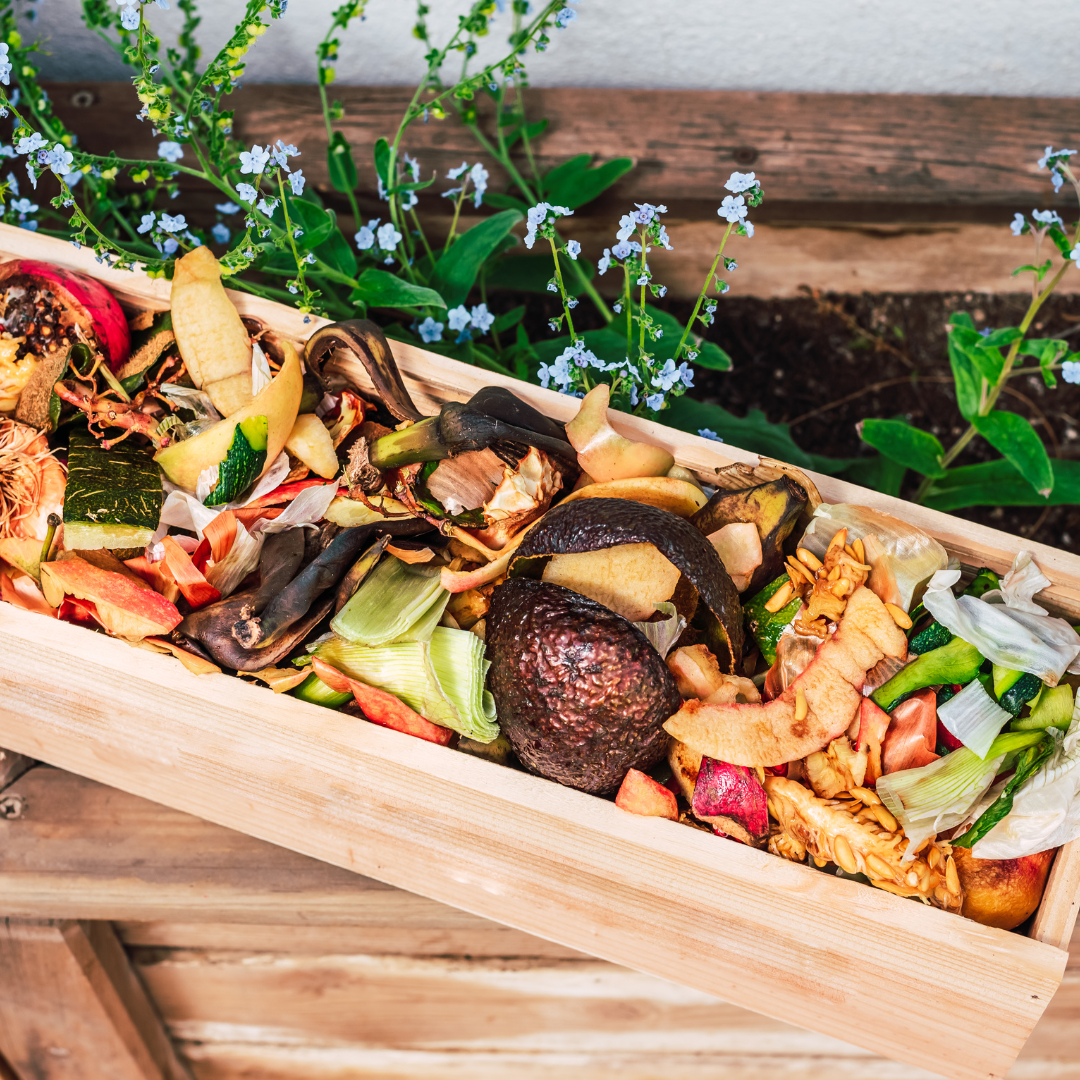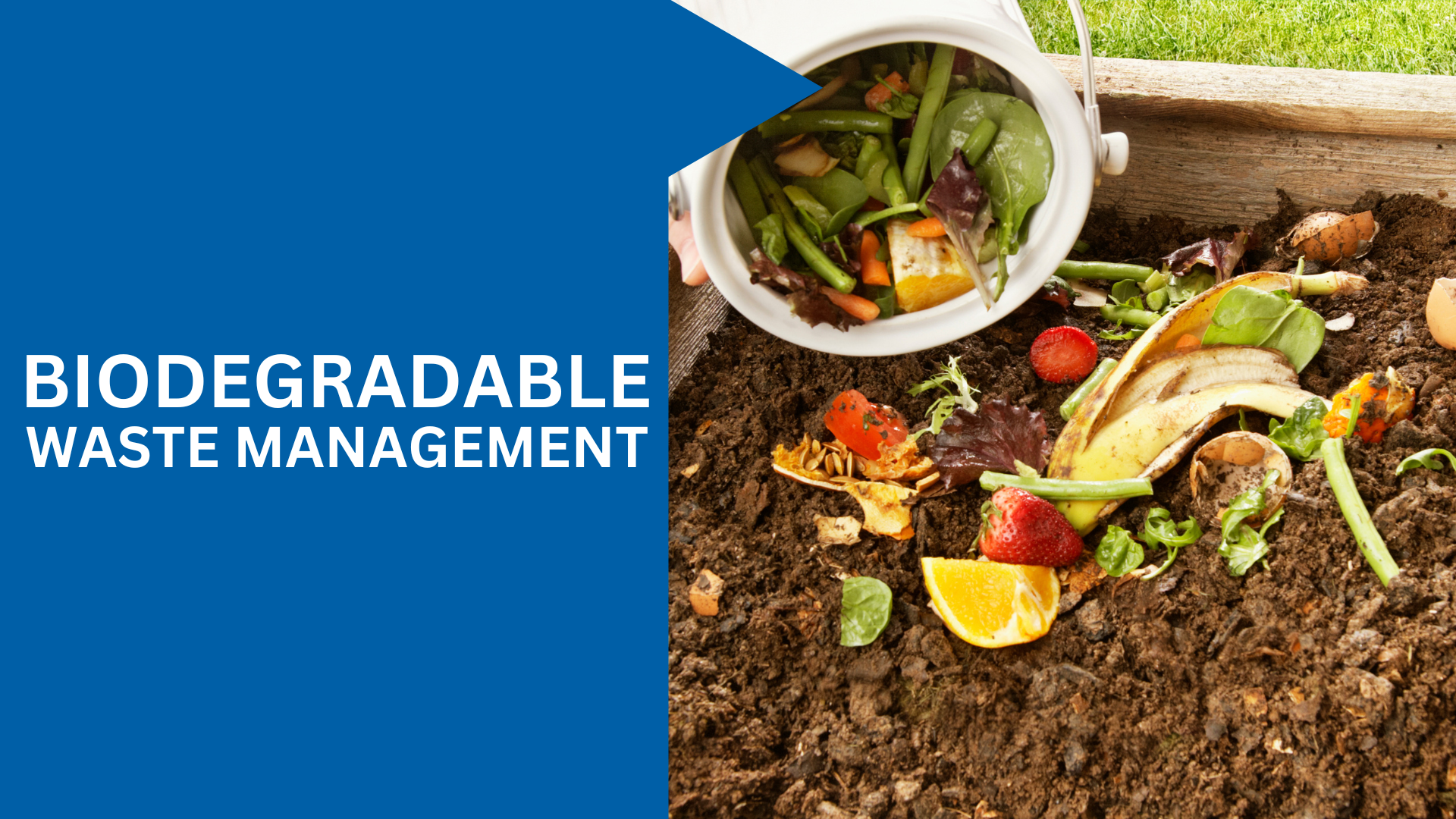‘The most important factor to remember is that biodegradable waste management is an eco-friendly solution.’ This article takes a look at the many benefits of using biodegradable materials for all aspects of your life.
What Does Biodegradable Mean?
The term ‘biodegradable‘ indicates that a substance can be broken down into simpler, non-toxic components by biological agents, such as bacteria and fungi, under natural conditions. This characteristic contrasts significantly with non-biodegradable materials, which persist in the environment for much longer periods.
What is Biodegradable Waste Management?
Biodegradable waste management is breaking down organic material so that it can be absorbed by the earth’s soil and converted back into natural elements. This is a critical step in minimizing our impact on the environment, as biodegradable materials release fewer harmful gases and pollutants than traditional waste management methods.
In our rapidly changing world, where waste generation is at an all-time high, understanding and managing biodegradable waste becomes not just important but essential for the health of our planet. This article delves into the various facets of biodegradable waste management, covering its importance, methods, and the role each of us can play in this global effort.
Different Types of Biodegradable Waste

There are several types of biodegradable materials, each with its own unique properties and decomposition process. Some common biodegradable materials include food waste, plant matter, and paper products. Each material has its own optimal decomposition temperature and time frame, which will vary depending on the geographic location and climate of the area where it will be placed.
Types of Biodegradable Waste
- Food Waste: Leftover food, vegetable peels, and fruit scraps are classic examples of biodegradable waste. They decompose quickly and can be turned into compost.
- Garden Waste: Grass clippings, leaves, and flowers fall under this category. They are typically high in nitrogen and excellent for composting.
- Paper Waste: Paper, though a common waste product, is biodegradable. However, it’s important to note that treated paper may take longer to decompose.
- Wood Waste: Wood chips and sawdust are biodegradable, although they decompose slower than other types.
- Human and Animal Waste: A more sensitive subject, but a significant biodegradable waste type. It is often used in biogas production.
Benefits of Biodegradable Waste Management
The benefits of biodegradable waste management are numerous. By breaking down organic material into smaller pieces, we reduce the amount of energy needed to dispose of the material.
This reduces our reliance on fossil fuels and helps us conserve natural resources. Additionally, biodegradable waste management methods help us protect our environment from harmful pollutants released during decomposition.
Though biodegradable waste management may seem like a daunting task, there are many resources available to help you get started.
Why Is Biodegradable Waste Management Important?
Biodegradable waste management is important because it helps us to protect the environment. It also helps us to reduce our reliance on landfill, which can be a harmful process. By composting and recycling biodegradable materials, we can create products that are beneficial to the environment.
What Is Composting?
 Composting is the process of converting organic material into compost through decomposition, which can be used to enrich the soil and produce natural pesticides. In other words, it is a way of recycling waste that can reduce landfill use and prevent pollution. We may tend to think that biodegradable waste management has to do with garbage cans or bags when we talk about it but there are other ways of doing so.
Composting is the process of converting organic material into compost through decomposition, which can be used to enrich the soil and produce natural pesticides. In other words, it is a way of recycling waste that can reduce landfill use and prevent pollution. We may tend to think that biodegradable waste management has to do with garbage cans or bags when we talk about it but there are other ways of doing so.
How Does Biodegradable Waste Management Work?
Biodegradable waste management uses components like paper, plastic, metal, wood, and cloth in an environment that promotes chemical reactions needed for the biodegradation of these materials.
Biodegradable Waste Management Techniques
Several techniques have been developed to manage biodegradable waste effectively. Composting and anaerobic digestion are among the most popular, each with its unique benefits and applications. This section explores these techniques in detail, providing insight into how they contribute to sustainable waste management.
How It Works?
Biodegradable waste management is a perfect solution for a sustainable earth. This type of waste management is based on the idea that organic materials can be broken down by bacteria and other microorganisms into harmless products, such as water and carbon dioxide. This process is known as composting, and it’s an important part of sustainable waste management because it helps to reduce the amount of garbage that ends up in landfills.
There are several benefits to using biodegradable waste management instead of traditional garbage disposal methods. For one, composting reduces the amount of greenhouse gas emissions that are released when garbage is burned or buried. It also helps to conserve resources, since less material needs to be recycled or disposed of in landfills. In addition, composting can be a fun activity for families, kids especially love getting their hands dirty!
Challenges in Managing Biodegradable Waste
The biggest challenges are efficient collection, proper segregation, and effective treatment of biodegradable waste to ensure it’s processed in an environmentally friendly manner.
Despite its benefits, biodegradable waste management faces several other challenges, including regulatory hurdles, technological limitations, and the need for greater public awareness and participation. Addressing these challenges is crucial for the success of waste management programs.
Benefits of Effective Biodegradable Waste Management
Effective management of biodegradable waste offers numerous benefits. Environmentally, it reduces landfill use and greenhouse gas emissions. Economically, it can generate income through the sale of compost or biogas. Socially, it creates job opportunities and promotes community involvement in sustainability efforts.
Collection of Biodegradable Waste
Variety and Complexity: The diverse nature of household biodegradable waste, from food scraps to garden debris, demands specific handling methods.
Goal-Oriented Gathering: The objective extends beyond mere collection to preparing waste for efficient segregation and treatment.
Segregation: Key to Efficient Waste Management
Unequal Decomposition: Not all biodegradable waste is equal – some items, like fruit peels, are compost-friendly while others, like meat scraps, require careful handling. Segregation for Optimization: Effective segregation ensures that each type of waste is directed towards the most suitable treatment process, optimizing resource recovery.
Treatment: Transforming Waste into Resources
Composting and Biogas Production: Organic waste transforms composting and advanced methods like biogas production, converting waste into valuable resources. Forward-Thinking Management: Proper treatment of biodegradable waste is a step towards sustainable living, turning waste into a resource and setting up a sustainable future.
How to dispose of Biodegradable Waste
Composting: A simple and effective way to recycle biodegradable waste. It turns organic waste into nutrient-rich soil.
Recycling: Some biodegradable wastes, like paper, can be recycled into new products.
Biogas Production: This is a more advanced method, of turning waste into energy.
Regulatory Framework and Policies
Effective policies and regulations are essential for guiding and supporting biodegradable waste management efforts. This section provides an overview of global policies and their impact on waste management practices.
Conclusion
When it comes to managing our waste, many of us find ourselves turning to traditional methods such as a landfill. However, this is not only environmentally damaging but also costly – especially when compared to biodegradable solutions. In this article, we will be exploring some of the best and most sustainable biodegradable waste management options available on the market today. By doing so, we hope to encourage readers to consider these alternatives before resorting to more traditional methods to protect our environment.
FAQs
1. What is the best way to dispose of biodegradable waste at home?
Composting is the best way, as it turns waste into useful fertilizer for plants.
2. Can biodegradable waste be turned into energy?
Yes, through processes like anaerobic digestion, biodegradable waste can produce biogas used for electricity and fuel.
3. How does composting help the environment?
Composting reduces landfill waste, lowers greenhouse gas emissions, and enriches the soil with nutrients.
4. What are the common mistakes in biodegradable waste management?
Mixing biodegradable waste with non-biodegradable materials, improper composting techniques, and lack of waste segregation are common mistakes.
5. How can businesses manage their biodegradable waste effectively?
Businesses can implement structured waste management plans, invest in composting or anaerobic digestion systems, and collaborate with waste recycling firms.

